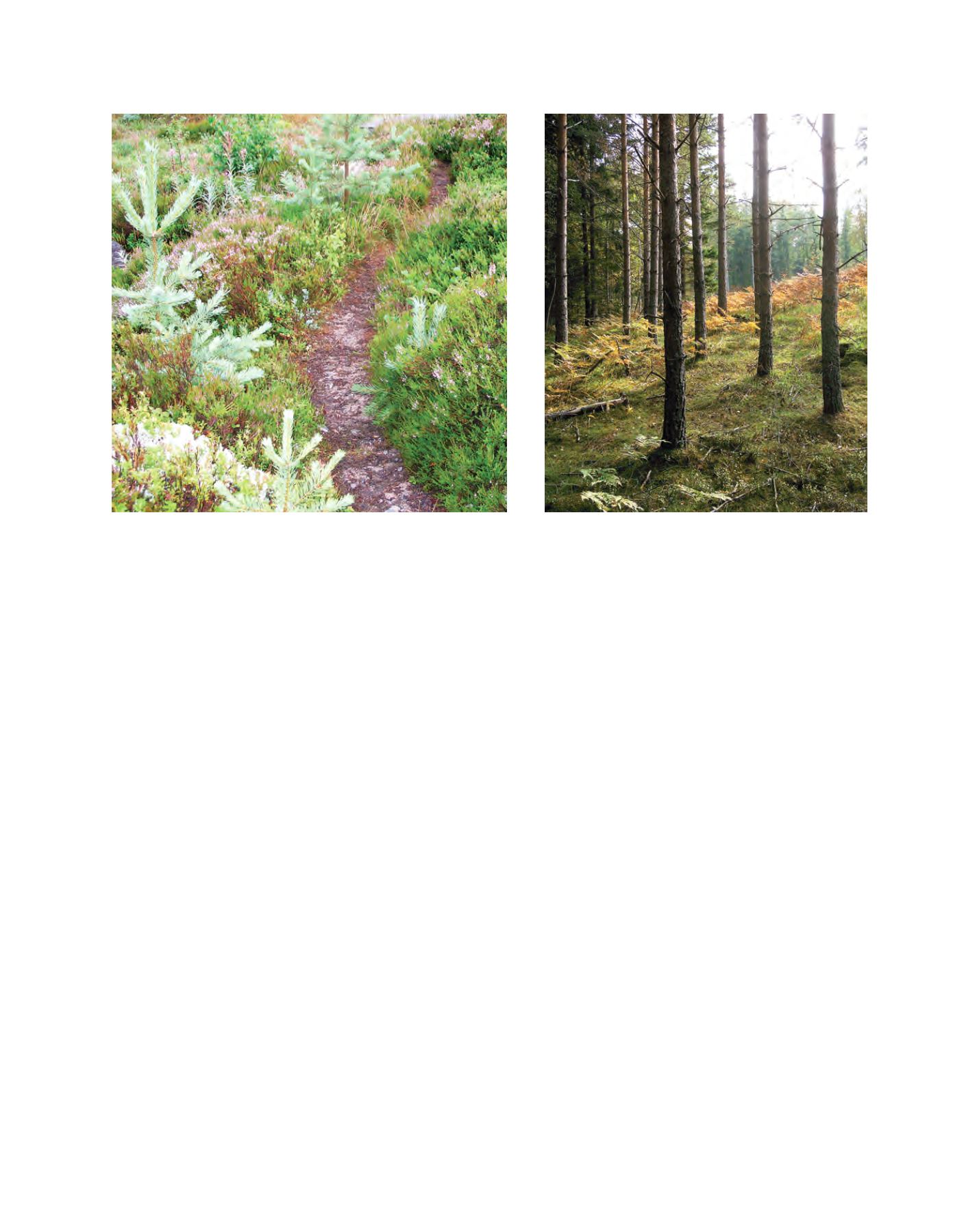

[
] 187
this ownership structure is translated into the principle of ‘freedom
with responsibility’. The sustainable management of Swedish forests
is a shared responsibility between the public and private domain.
Successful management is dependent on forest owners acting
responsibly and considerately in terms of sustainable usage.
Forest management also takes into account public interests. In
Sweden, forests play a very important role for recreation including
a range of activities such as running, walking, cross country skiing,
picking berries and mushrooms, hunting, fishing and hiking. Another
unique feature in Swedish forest management is the opportunities
given through the Right of Public Access. This gives people the right
to move freely in all forests and other natural habitats. However, with
that follows responsibility. People moving in the forest are expected
to be respectful in relation to the landowners, the well-being of the
forest, as well as other people present in the area of interest.
Moreover, the Swedish forestry model for maintaining and enhanc-
ing forest biodiversity has a holistic approach. Unlike many other
countries, sustainable forest management is applied across all forest
surfaces through a combination of general consideration of conser-
vation interests in everyday forest management and formal forest
protection of designated sites, in addition to voluntary set-asides.
Future perspectives
The forest will continue to be very important for the people of
Sweden in the future, providing a large variety of products and
services. Timber production is expected to remain at a high level;
harvesting levels currently lie between 80 and 90 per cent of the
annual increment. However, some changes are taking place when
it comes to the end use of the harvested timber. Already today we
can see the share of wood used for energy purposes increasing
as compared to traditional uses for pulp, paper and sawn wood.
In the near future we expect biorefinery products to increase in
importance.
There are some discussions on the availability of
raw material to satisfy the demands for the various
end products. Therefore research is being conducted
to assess ways of further increasing resource efficiency
and further intensifying forestry practices.
Climate change is another factor with possibly large
consequences for forestry. The research community and
practitioners alike are continuously assessing the situ-
ation and trying to foresee possible risks such as the
appearance of new forest pests and diseases as well as
new tree species. Tests are also made to investigate new
opportunities in terms of species that could be used in
a different climatic situation.
In the light of increasing demands for raw materi-
als and the effects of climate change, the balance
between environmental and economical sustainability
will become an even bigger challenge. As mentioned,
Sweden has implemented sustainable forest manage-
ment by assigning equal importance to environmental
and production functions. Given that outside factors
and demands can disrupt this balance it is essential that
all those involved recognize sustainable forest manage-
ment as an iterative process where one tries to find a
new equilibrium, reflecting the overarching objectives,
as soon as one of the factors changes.
Together with environmental and economic values,
social values form the third pillar of sustainable forest
management. Sweden has one of the highest per capita
areas of forest in Europe and thus availability of forest for
recreation is not perceived as a limiting factor. However,
there are other dimensions to social sustainability, such
as rural livelihoods – of people living in or close to the
forest. Swedish Government policy has recently priori-
Swedish forest policy was early to acknowledge the importance of sustainable resource utilization and to adopt ambitious targets for biodiversity conservation
Image: Marcus Öhman
Image: Marcus Öhman
















